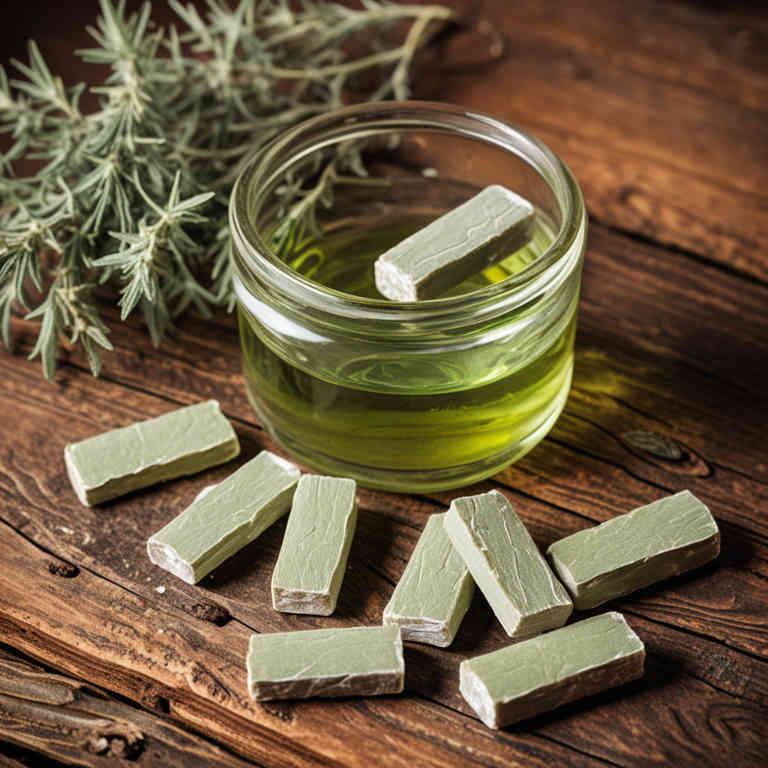Artemisia absinthium lozenge for medicinal use

Artemisia absinthium lozenge is a herbal preparation made from the dried leaves and flowers of the wormwood plant.
It is traditionally used in herbalism to support digestive health and alleviate symptoms of digestive disorders. The lozenge form allows for easy consumption and can help soothe sore throats and reduce inflammation. It is also believed to have mild antiparasitic properties.
This preparation is often used as a complementary therapy under the guidance of a qualified herbalist.
Uses
Artemisia absinthium lozenge has been used to treat respiratory conditions, digestive issues, and as a mild stimulant for mental clarity.
Historically, it was valued in ancient Greece and Rome for its purported ability to improve appetite and digestion. Traditional uses also included its application in treating fevers and as a remedy for insomnia. In modern times, it is sometimes used in herbal medicine for its potential antispasmodic and antioxidant properties.
However, its use today is less common due to the complexity of its preparation and potential side effects.
Benefits
Artemisia absinthium lozenge has health benefits such as aiding in respiratory health, reducing inflammation, and supporting immune function.
It is traditionally used to alleviate symptoms of coughs, colds, and bronchitis due to its expectorant properties. The active compounds in Artemisia absinthium, such as thujone and flavonoids, may help soothe irritated airways and promote easier breathing. Additionally, it has antimicrobial properties that can help combat infections.
However, it should be used with caution and under the guidance of a healthcare professional, as it may have side effects or interactions with certain medications.
Constituents
Artemisia absinthium lozenge active constituents include thujone, artemisinin, flavonoids, and essential oils.
These compounds are known for their potential antimicrobial, antiparasitic, and anti-inflammatory properties. Thujone is a key compound that may contribute to the lozenge's ability to soothe respiratory tract infections. Artemisinin, although more commonly associated with A. annua, may also play a role in supporting immune function.
The combination of these constituents makes Artemisia absinthium lozenge a traditional remedy used for digestive and respiratory health.
Preparation
To make Artemisia absinthium lozenge, first gather dried Artemisia absinthium leaves and grind them into a fine powder.
Next, mix the powder with a small amount of honey or glycerin to create a paste. Then, shape the mixture into small lozenges using a mold or by hand. Allow the lozenges to dry completely in a cool, dark place.
Finally, store the lozenges in an airtight container to preserve their potency and flavor.
Side Effects
Artemisia absinthium lozenge may lead to gastrointestinal discomfort, including nausea, vomiting, and diarrhea, due to its bitter compounds.
It can also cause liver toxicity with prolonged use, as artemisinin derivatives have been linked to hepatotoxic effects. Some individuals may experience allergic reactions, such as rash or itching, upon ingestion. The preparation may interact with certain medications, particularly those affecting the liver or blood clotting.
It is important to consult a healthcare professional before using this herbal preparation, especially for extended periods or in high doses.